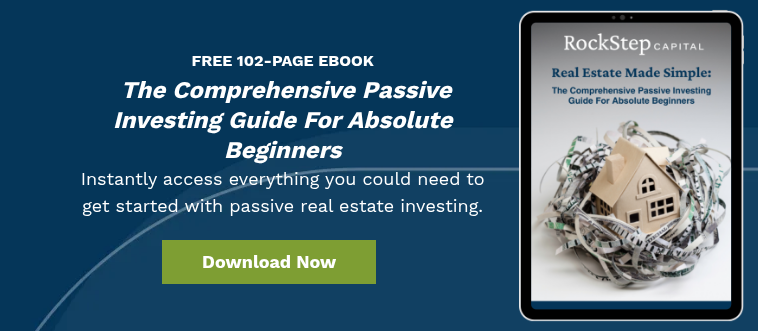How New Investors Can Actually Access Private Real Estate Deals
March 14th, 2025
5 min read

Rule 506(b) allows private real-estate offerings to accept accredited and up to 35 non-accredited investors without public solicitation. Rule 506(c) permits general advertising but only to accredited investors and requires third-party verification of their status.
When it comes to private real estate deals, knowing the difference between 506(b) and 506(c) can shape who gets in and how they will do it.
Imagine you're invited to two exclusive real estate investment clubs. One allows you to join if you have a personal connection with the host, even if you’re not a high-net-worth investor. The other requires you to prove you have a certain level of wealth before they even let you in the door—but in return, you get access to a wider range of opportunities.
This is essentially the difference between 506(b) and 506(c) real estate offerings under Regulation D of the Securities Act of 1933. These rules determine who can invest in private real estate syndications, and understanding them can be the key to unlocking lucrative commercial real estate deals.
At the heart of these qualifications is the concept of an accredited investor, which is essentially a designation that determines whether you can access certain private investments. Think of it like a VIP pass: If you meet the SEC’s financial requirements, you can enter any investment room. You’ll need the right connections to get into select deals if you don't.
Let’s break down what this means for new investors, how 506(b) and 506(c) offerings differ, and whether you qualify to participate in these exclusive real estate opportunities.
What Is an Accredited Investor?
The SEC (Securities and Exchange Commission) defines an accredited investor as someone who meets certain financial criteria, making them eligible to invest in private offerings that aren't registered with the SEC. The reasoning? The government assumes wealthier or financially sophisticated individuals are better equipped to handle high-risk investments.
Consider it like this: Accredited investors are considered "financially seasoned" enough to handle the heat of private deals, like experienced chefs who don’t need warning labels on a hot stove. Non-accredited investors, on the other hand, may not have the financial cushion to absorb losses, so their access is more limited.
Accredited Investor Criteria (as of 2024)
The U.S. Securities and Exchange Commission (SEC) established these criteria to identify financially sophisticated individuals and entities able to bear the risks of private investments.
- Income Requirement: An individual must have had an annual income exceeding $200,000 (or $300,000 together with a spouse) in the two most recent years and reasonably expect the same income level in the current year.
- Net Worth Requirement: An individual must have a net worth of over $1 million, excluding the value of their primary residence.
- Professional Certification Requirement: Individuals holding certain professional certifications, such as Series 7, Series 65, or Series 82 licenses, may qualify as accredited investors.
- Entity Qualification: Entities, including LLCs and trusts, with assets exceeding $5 million may qualify as accredited investors.
If you don’t meet these criteria, don’t worry—you may still be able to invest in 506(b) offerings through the right relationships.
506(b) vs. 506(c): Two Investment Paths
Now that you know what it takes to be accredited, let’s dive into the two most common types of private real estate offerings: 506(b) and 506(c). Think of these like two different types of clubs—each with its own rules for who can get in and how they’re invited.
Both 506(b) and 506(c) offerings fall under Regulation D, allowing real estate sponsors to raise funds without the regulatory burden of a full public securities offering. However, they differ in how they handle investor qualifications and marketing.
Before diving into both 506(b) and 506(c) offerings in depth, refer to the graphic below for an introduction to the six main differences between these two private investing options:
.png?width=840&height=630&name=Comparing%20506b%20and%20506c%20options%20graphic%20(1).png)
506(b) Offerings: The "Invite Only" Club
A 506(b) offering allows sponsors to raise capital from both accredited and up to 35 non-accredited investors, as long as they have a pre-existing relationship with them. However, there are strict restrictions on advertising and public solicitation.
Overall, a 506(b) offering is like a private dinner party. You can’t just walk in off the street; you need an invitation from someone who knows you.
Key Features of a 506(b) Offering:
- Accepts both accredited and up to 35 non-accredited investors.
- No public advertising - deals are shared privately.
- Investors self-certify their accreditation (no official verification is needed).
- Non-accredited investors must be “sophisticated” (i.e., have financial knowledge).
Because 506(b) deals don’t require accreditation, they’re often the best entry point for new investors, as long as you have an existing relationship with a syndicator.
Example: Imagine you’ve been networking with real estate investors for a year, attending meetups, and forming relationships. One day, a sponsor reaches out about a private shopping center investment—but only because they know and trust you. This is how 506(b) works: relationships first, investments second.
506(c) Offerings: The "Open But Exclusive" Club
A 506(c) offering is restricted exclusively to accredited investors but allows public advertising and solicitation. In other words, a 506(c) offering is more like a VIP event with a bouncer checking credentials at the door. You don’t need a personal connection to get in, but you must prove you belong.
Key Features of a 506(c) Offering:
- Only accredited investors can participate.
- Sponsors can market publicly (social media, websites, webinars, etc.).
- Investors must provide third-party verification of their accredited status (e.g., CPA letter, attorney confirmation, or third-party verification service).
For investors who meet the accredited investor criteria, 506(c) offerings provide access to a wider range of opportunities, often with better terms, because they can reach a larger pool of capital. This allure of exclusive opportunities with potentially better terms can make 506 (c) offerings particularly attractive to accredited investors.
Example: Say you come across an ad on LinkedIn about a new commercial real estate deal with strong returns. If it’s a 506(c) offering, you can invest only if you verify your accredited investor status, just saying you meet the requirements isn’t enough.
Which One Is Right For You?
Whether a 506(b) or 506(c) offering is the right fit depends on:
- Your investor status – If you're not an accredited investor, 506(b) is your only option (as long as you have a prior relationship with the sponsor).
- Your investment goals—Accredited investors may prefer 506(c) deals because they offer a broader selection and potential for better investment structures.
- Your relationship with sponsors —506(b) requires a preexisting relationship, which helps build connections before investment opportunities arise.
If you are not accredited yet, focus on networking with syndicators that offer 506(b) deals. Building strong relationships can give you early access to real estate opportunities before they are publicly available. This underlines the value of your relationships in gaining access to investment opportunities.
Why This Matters For Investors
Understanding accredited investor qualifications and the differences between 506(b) and 506(c) offerings is essential for navigating private real estate investments. These regulations are designed to balance investor protection with access to lucrative opportunities, and knowing where you fit in the framework can help you make smarter investment decisions.
If you are not yet an accredited investor, consider ways to build your financial position to qualify for more opportunities. In the meantime, focus on networking with syndicators who offer 506(b) investments.
For those already accredited, 506(c) offerings provide a broader investment landscape, often with greater deal transparency and availability.
How To Continue Your Investment Journey
Understanding investor qualification standards is just the first step. As you start your investment journey, consider these next steps:
- Decide what type of real estate you want to invest in – Are you interested in commercial properties like shopping centers, or do you prefer residential rentals?
- Determine your investment approach – Do you want to invest passively in syndications or actively in property management?
- Choose the right investment partners – Do you prefer working with a vertically integrated company (which handles acquisitions, leasing, and management in-house) or a horizontally integrated one (which outsources certain aspects)?
Educating yourself on these topics will help you build a solid foundation for successful investing. The RockStep Capital Learning Center is a great place to dive deeper into these concepts and explore more commercial real estate insights.
Positioning Yourself As a Beginner Investor
Investor qualification standards aren’t roadblocks. They’re guideposts that help match the right investors with the right opportunities.
For new investors, 506(b) offerings provide a way in if you build the right relationships. If you're already accredited, 506(c) deals expand your options more flexibly and transparently.
Either way, understanding these rules helps you navigate the investment landscape like a pro. And the more you learn, the better positioned you’ll be to take advantage of high-quality real estate deals in the future.
Topics:



























